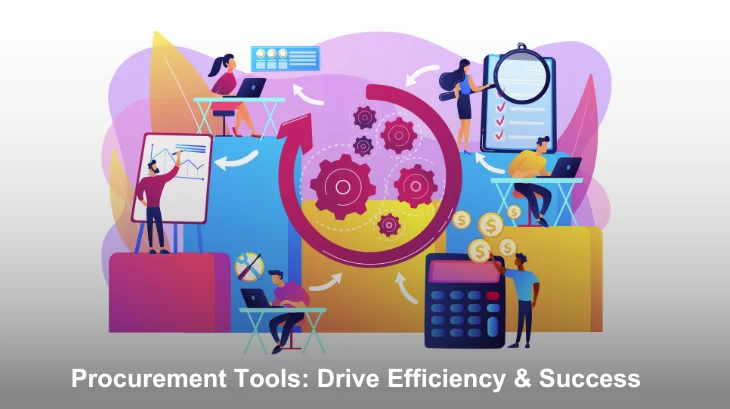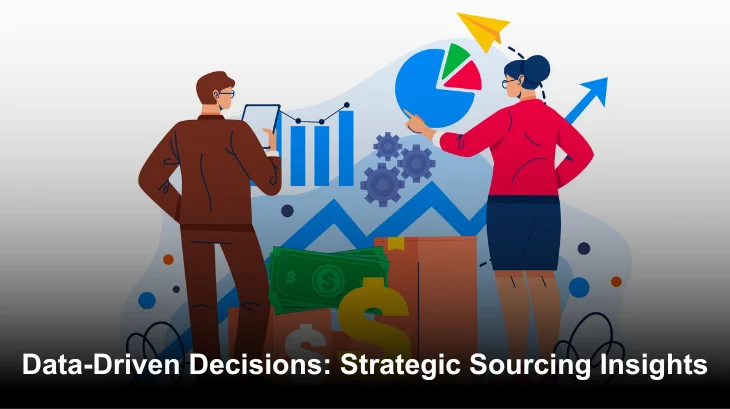
Have any questions Submit an Inquiry


In the intricate dance of the strategic sourcing process, few steps are as pivotal as selecting the right suppliers. This choice not only lays the foundation for subsequent operations but also holds the promise of fostering long-term partnerships, optimizing costs, and ensuring quality. As the digital age unfolds, procurement organizations are increasingly turning to seemingly comprehensive directories and databases to aid this selection. While these platforms, with their vast listings and impressive metrics, promise a shortcut to the ideal supplier discovery, one must ponder: Is this reliance well-founded? Or are we potentially sidelining more holistic, in-depth methods in favor of digital convenience? As we delve deeper into this topic, we’ll explore the nuances of this trend and its implications for the modern procurement landscape.
In today’s fast-paced digital world, procurement organizations are increasingly gravitating towards the allure of directories and databases. With the promise of instant access to a plethora of suppliers at their fingertips, these platforms have become the go-to resource for many. The rationale behind this shift seems straightforward: why venture into the vast expanse of the market when a curated list awaits you with a simple click?
This reliance is further cemented by the often hefty subscription fees attached to these platforms. For many, it’s a straightforward equation—higher costs must surely equate to premium, exhaustive content. The logic dictates that if a database boasts millions of suppliers and demands a premium price, it must be the gold standard in supplier discovery.
However, this equation is riddled with misconceptions. The sheer volume of listings does not always translate to quality or relevance. Moreover, the notion that a high subscription cost guarantees an all-encompassing list of potential suppliers is flawed. In the intricate world of procurement, where every choice can have cascading effects on the entire supply chain, depending solely on directories and databases might be a simplistic approach, neglecting the multifaceted nature of supplier selection.
In the pursuit of effective strategic sourcing, it becomes imperative to critically assess the tools at our disposal. Databases and directories, while revered by many, are not without their flaws. A deeper dive into their structure, methodology, and offerings often unveils gaps that could jeopardize the entire sourcing process.
In sum, while databases and directories may present a facade of comprehensiveness, it’s crucial to peel back the layers and critically evaluate their offerings. The stakes in strategic sourcing are high, and settling for anything but the most accurate, relevant, and timely supplier information is a gamble few can afford.
In the age of digital transformation, databases have become the go-to repositories of information for many procurement organizations. Yet, as with all tools, their utility is only as good as their accuracy, timeliness, and comprehensiveness. Over-reliance on databases without critical evaluation and supplementary research can lead to various pitfalls, some of which can have a lasting impact on an organization’s strategic sourcing endeavors.
In conclusion, while databases are undoubtedly valuable tools, they should be viewed as starting points rather than definitive lists. A holistic approach to strategic sourcing involves complementing database insights with independent research, market analysis, and continuous engagement with the evolving supplier landscape. Only then can organizations truly harness the full potential of strategic sourcing and avoid the pitfalls of over-reliance on databases.
In the intricate tapestry of strategic sourcing, the threads of supplier discovery weave the foundational pattern. A pattern that, if not meticulously and diversely sourced, can compromise the integrity of the entire procurement strategy. EmpoweringCPO recognizes this pivotal role of supplier discovery and has curated a holistic approach that transcends the limitations of traditional databases and directories.
In essence, EmpoweringCPO’s approach to supplier discovery is a harmonious blend of depth, breadth, and foresight. It’s not about merely finding suppliers; it’s about finding the right suppliers. In a world where data is abundant but insights are scarce, our holistic approach ensures that our clients always make informed, strategic, and impactful decisions in their sourcing endeavors.
In the dynamic realm of procurement, one might argue that the age-old adage “knowledge is power” has never been more relevant. The depth and quality of research undertaken during the supplier discovery phase can determine the trajectory of an organization’s procurement strategy. While databases and directories might offer a convenient starting point, they often only scratch the surface of what’s available. Let’s delve deeper into the compelling reasons why comprehensive research is not just a good-to-have but a must-have.
In conclusion, while databases and directories offer a preliminary view, it’s the panoramic perspective provided by comprehensive research that truly empowers procurement organizations. By diving deep, asking the right questions, and refusing to settle for the obvious, businesses can unlock a treasure trove of opportunities, ensuring their procurement strategies are not just effective but also future-proof. The choice is clear: to remain content with the superficial or to delve deeper and discover the vast potential that lies beneath.
In the intricate dance of procurement, where every step and decision reverberates throughout an organization’s supply chain, the method of supplier discovery is not just a preparatory step—it’s foundational. It’s the compass that guides businesses towards optimal sourcing decisions. And as we’ve journeyed through this discourse, the pitfalls of over-relying on directories and databases have become evident. While they offer a semblance of convenience, they often lack the depth, dynamism, and discernment required in today’s rapidly evolving market landscape.
But all is not lost. As the horizon of procurement expands, so do the methodologies and strategies that drive it. EmpoweringCPO stands at the forefront of this evolution, championing a more nuanced approach to supplier discovery. By synthesizing data from a myriad of sources, both conventional and unconventional, we ensure that businesses are not just informed but are also equipped to make decisions that resonate with their strategic objectives.
To all the astute readers and forward-thinking procurement professionals, the invitation is clear. Venture beyond the familiar confines of databases and directories. Embrace a more holistic, research-driven approach. Let EmpoweringCPO guide you through the maze of supplier discovery, ensuring that every turn you take is backed by expertise, insight, and innovation.
Dive deep. Discover more. Let’s redefine strategic sourcing together.
Email: Sales@EmpoweringCPO.com
Phone no: +91-987-956-4584
EmpoweringCPO is a team of experienced sourcing and procurement professionals with hands on experience of having worked with many fortune 500 companies. The company was founded in 2011 and since then has executed multiple strategic sourcing projects and have achieved average savings of 10-12% so far. In addition to Strategic Sourcing their other offerings are Spend Analysis, Procurement Intelligence, Procurement Analytics, Best Cost Country Sourcing, Procurement Outsourcing, Built Operate Transfer, Supplier Diversity, Sustainable Procurement, Tail Spend Management, Item Master Optimization, Collective Buying, Compliance Tracking and Managed Procurement Services.




Compliance management is very critical as otherwise the procurement organization may run into a scenario where there is a huge gap between realized savings and reported savings. Many procurement functions estimate large savings numbers when contracts are signed. They also invest significant time and effort in negotiating contracts for necessary goods and services, only to have a third or more of their purchasing dollars flow outside those deals. Some of the obvious fall-outs of non-compliance and maverick purchases are:
As compared to the current contract that was finalized after the sourcing process, the tool helps in tracking:
The objective of this tool is to ensure that the orders are placed only with the vendors that were shortlisted after the sourcing process and at the same price that was agreed upon and negotiated during and after the strategic sourcing process.